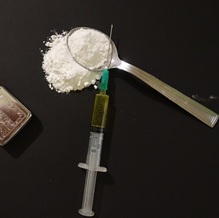
Why This Course—And Why Now
Fentanyl and methamphetamine contamination is a growing hazard in homes, rentals, vehicles, and commercial spaces. Contractors and environmental pros who can safely assess, remediate, and document clearance are in high demand. This intensive one-day course gives you the science, the field procedures, and the marketing playbook to launch or expand this service immediately.
What You’ll Learn
By the end of the day you will be able to:
- Explain the health risks and contamination pathways of methamphetamine and fentanyl, including how smoking alone contaminates interiors.
- Conduct testing and assessment using recognized wipe methods (Modified Method 8270) to map contamination and avoid cross-contamination.
- Develop a site-specific decontamination plan aligned with federal/state/local guidance and lab reporting requirements.
- Select and use PPE and safety protocols to protect your team.
- Apply proven decontamination chemistry and application methods (spray, fog, wipe) including best practices for HVAC, surfaces, fixtures, porous materials, and post-cleaning testing.
- Document and market your service to property managers, realtors, insurers, lenders, and health departments—with pricing and positioning tips to win jobs.
You’ll leave with templates and checklists you can put to work on your next project.
Why Trust NORMI™’s Approach?
- Proven in the field: Processes refined across hundreds of contaminated projects to pass clearance the first time and reduce costly demolition.
- Efficient & scalable: Typical homes can be decontaminated by two techs in two days using the taught workflow—saving clients thousands and helping you compete on value.
- Chemistry that works: “Meth and fentanyl are created by chemistry; they can be destroyed by chemistry.” The course shows how to apply that safely and consistently.
Certification You’ll Earn
NCDCT — NORMI™ Certified Drug Cleanup Technician
Complete the one-day training and assessments to receive your certificate and digital badge. Use it in proposals and marketing to differentiate your services.
Bring This Training to Your Team
Interested in a private class for your company or region? Contact us to schedule an on-site session.
Contact:
NORMI™ — National Organization of Remediators & Mold Inspectors
Doug Hoffman, Executive Director • doug@normi.org
ONSITE COURSES
LIVE ONLINE COURSES
- Restoration contractors • Environmental remediation firms • Biohazard/trauma cleanup teams
- Mold remediators and inspectors expanding services
- Facility managers • Property managers • Insurance vendors and adjusters
- Introductions & safety briefing
- Illicit drug hazards, regulations & ethics
- Testing/assessment workshop (tools, templates, labs)
- Decon practicum: application methods, HVAC, surfaces/fixtures
- Post-cleaning testing & documentation
- Marketing & pricing playbook
(Timing and hands-on elements may vary by venue.)
Is this only for former hazmat techs?
No. The course is designed for restoration, remediation, and environmental professionals who follow safety protocols and want a clear, repeatable process.
Will I learn both meth and fentanyl cleanup?
Yes—assessment and remediation for both meth and fentanyl are covered, including key differences (particle size, toxicity, and procedure tweaks).
Do we go over clearance testing and labs?
Yes. You’ll learn the recognized Modified Method 8270 wipe approach, lab packaging/chain of custody, and post-cleaning sampling to prove results.
What PPE is required?
We cover minimum PPE, suit/glove choices, and critical habits to avoid cross-contamination.
1) Illicit Drug Overview
Methamphetamine production/use patterns, fentanyl prevalence and risks, lab vs. “smoking site” contamination, xylazine (“tranq”) considerations.
2) Regulations & Guidelines
How to navigate federal, state, and local expectations; reporting triggers; clearance thresholds commonly used by authorities and lenders.
3) Testing & Assessment
When to screen vs. map; Modified Method 8270 wipe sampling; chain of custody; lab options, typical costs, and turnaround; photo documentation; avoiding cross-contamination.
4) Safety & PPE
Minimum PPE, donning/doffing, site controls, ethics policy for remediation conduct.
5) Decontamination Methods
Chemistry-driven approaches for meth and opioids; mixing/application windows; ULV fogging and wipe techniques; HVAC protocols; when selective removal is required; three-step workflow to reduce labor while improving outcomes.
6) Post-Cleaning Clearance
Sampling near original test locations; documentation standards—“If you didn’t document it, it didn’t get done.”
7) Business & Marketing
Target buyers, messaging, and proof packages (before/after testing, lab reports, photos) to accelerate approvals and payment.
